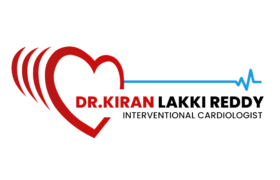Coronary Angiogram


Coronary angiogram is a minimally invasive procedure used to diagnose and assess the severity of blockages or narrowing in the coronary arteries, which supply blood to the heart. It involves injecting a contrast dye into the arteries and using X-ray imaging to visualize the blood flow and identify any abnormalities.
While coronary angiogram is primarily a diagnostic tool, it can also be used as a treatment option in certain situations. Here are a few scenarios where angiogram can be part of the treatment process:
- Angioplasty: During the angiogram procedure, if a significant blockage is detected, an angioplasty may be performed immediately. Angioplasty involves inserting a small balloon catheter into the blocked artery and inflating it to widen the narrowed area. In some cases, a stent (a small mesh tube) may also be placed to help keep the artery open and improve blood flow.
- Thrombectomy: If a blood clot is causing a complete blockage in a coronary artery, a procedure called thrombectomy may be performed during the angiogram. A specialized catheter is used to remove the clot and restore blood flow to the heart.
- Evaluation for bypass surgery: In some cases, a coronary angiogram is used to determine the need for coronary artery bypass graft (CABG) surgery. The procedure helps identify the location and severity of blockages, which can guide the surgeon in planning the bypass procedure.
It’s important to note that while angiograms can be part of the treatment process, they are primarily used for diagnosis. The decision to proceed with angioplasty, thrombectomy, or bypass surgery depends on the individual patient’s condition and the expertise of the medical team involved. It is always recommended to consult with a qualified healthcare professional for personalized advice and treatment options.
Fill This Form
Get In Touch
- +91 90149 44654
- lakki.reddy.63@gmail.com
- CANES - Cardio & Neuro Clinic, 3rd Floor, Tapasavi Commercial Complex, Hi-tension Rd, Kondapur, Hyderabad,
Copyright ©2023 All rights Reserved to Drkiran Lakki Reddy ll Develop & Design by Branding Nuts
